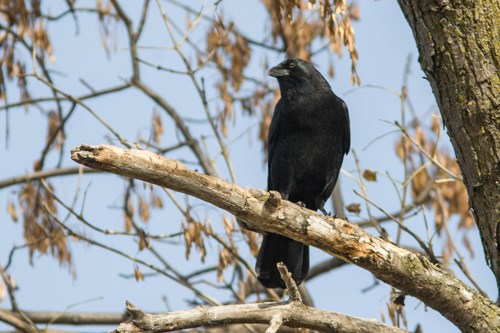
NPS/Gordon Dietzman IntroductionBirds and other animals fall into two general categories: generalists and specialists. Specialists are animals which have a very specific niche in the environment. For instance, some birds will have a bill shaped so it can exploit a resource that others cannot. Generalists, such as the American crow, are birds that can survive just about anywhere and can find food, water, and shelter in many different types of environments. Crows are fascinating and common birds found in cities and wilderness, the northern forest and southern deserts, eastern forests and western mountains. What makes them so successful? Crows are omnivores willing to consume small rodents and nestlings, carrion, seeds and berries, and even garbage. If one food source disappears they quickly adapt and find other sources of food. They are also intelligent birds that learn from experience and often solve novel problems with unexpected ingenuity. Some crows have learned that dropping nuts at some distance above hard-paved roads will break the shells, although they probably don't drop them on roads--as has been reported--hoping cars will run over them. They are also highly social birds that live in cooperative groups. Family groups often consist of two adult birds and previous offspring, which help care for new chicks. And, as with most social animals, crows are adept at communication. A sudden call from a crow acting as sentinel may not only warn of danger, but encode whether flying, hiding, or mobbing will be the best strategy for coping with the threat. Crows may gather in large groups to roost. No one knows for sure why these large aggregations form. A particular roost may just be a good spot to roost. But flocking may also protect against predators, provide greater warmth on cold nights, or permit hungry crows to follow well-fed crows to good foraging sites the following morning. Identification
|
Last updated: February 25, 2022
